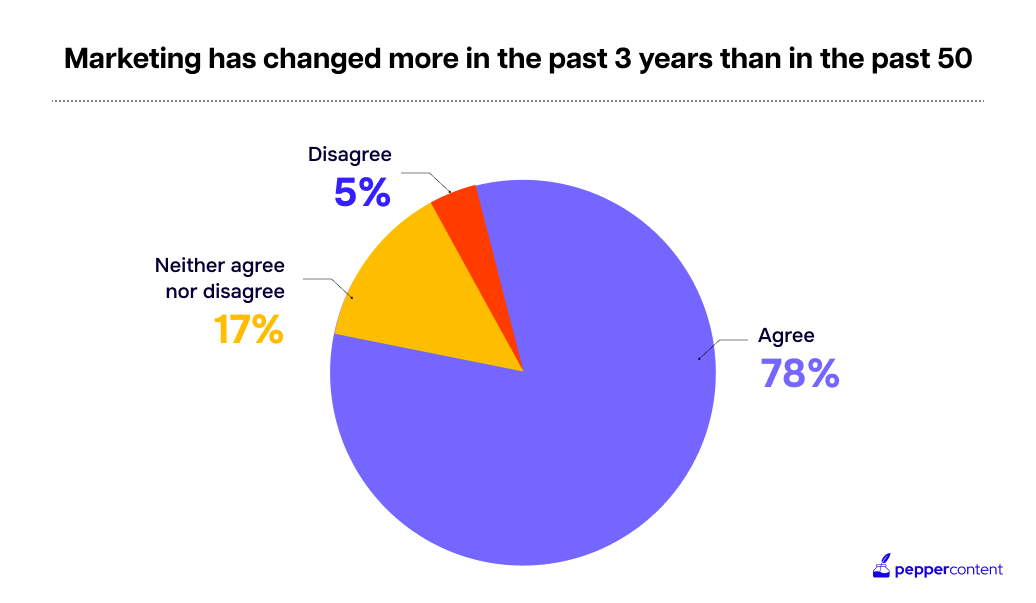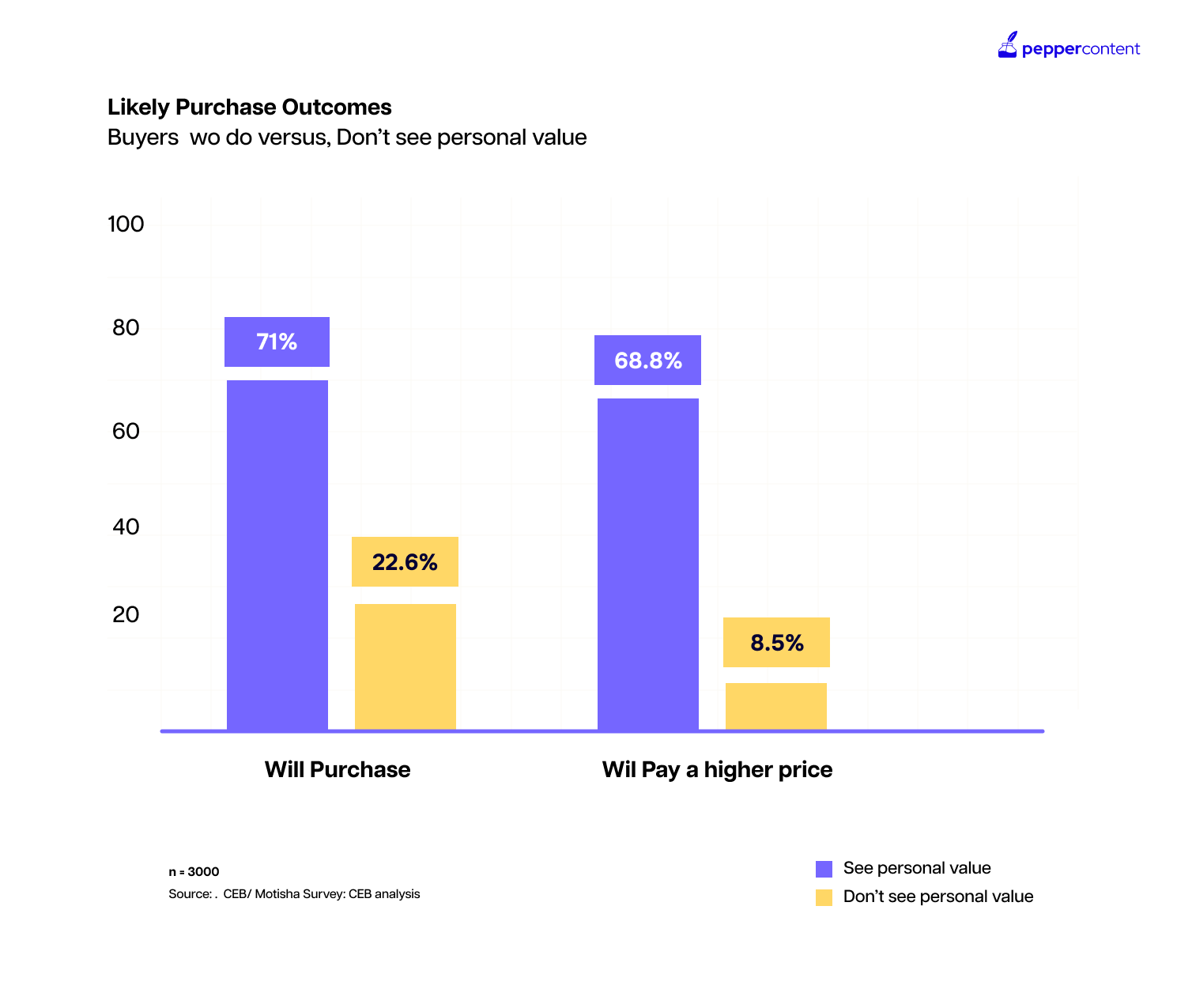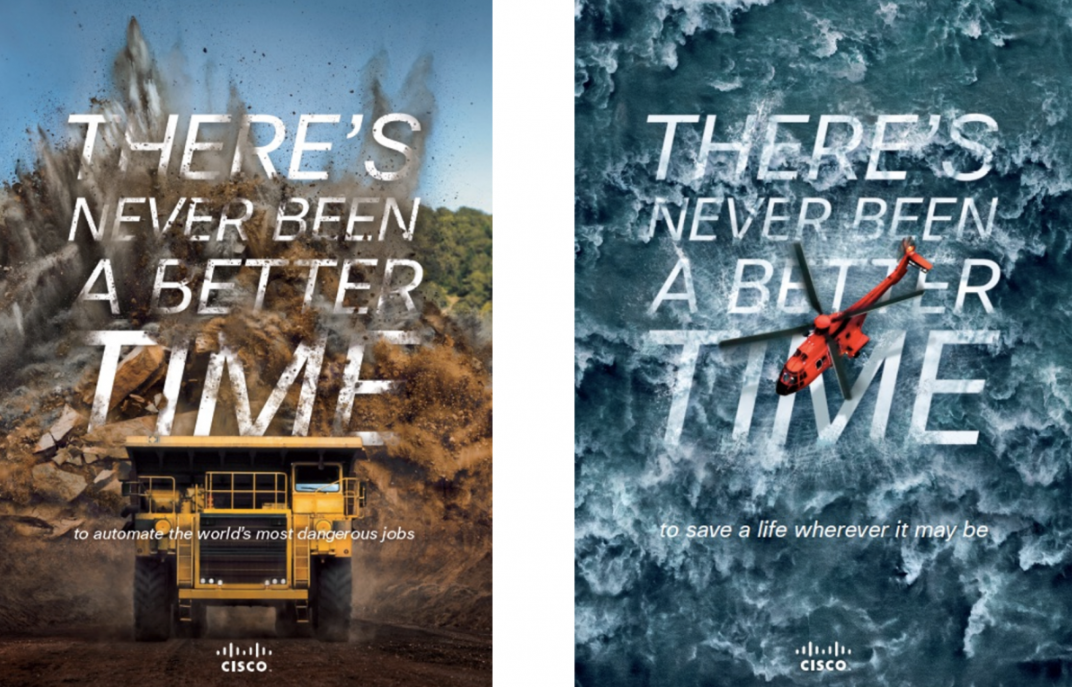Narrative-driven B2B Content Marketing: Best Practices for Engaging Audiences with Stories

The B2B marketing landscape is always on the move, where strategies and techniques constantly adapt to changing market demands and technological advancements. In a HubSpot survey of over 1,200 respondents, 80% indicated that marketing has changed more in the last three years than in the past 50 years.

Hence, establishing a robust presence in the market and effectively engaging with the target audience is paramount for B2B companies.
In the complex landscape of B2B marketing, businesses navigate through various intricate funnels, all with the ultimate goal of delivering the right content to the right audience at the right moment. A narrative-centered B2B content marketing strategy that resonates with potential customers and guides them along the purchasing journey is the backbone of success in this realm.
Understanding the Power of Stories in B2B
Storytelling, a tool we’ve employed for thousands of years to share knowledge, culture, and traditions, holds immense power. Have you ever observed how your brain lights up with interest when you’re engaged in a compelling story?
Well, it’s because our brains are fully immersed in the stories. When we hear a terrific story, different brain parts become active. Now, there’s a good reason why stories have such a significant impact on our brains.
First, stories serve as a medium for us to communicate with the world. They let us put information and ideas into a clear and easy-to-remember narrative. When we hear a story, our brains work hard to fill in gaps, find meaning, and make connections.
Another reason stories work so well is because they make our brains release neurotransmitters like dopamine and oxytocin. These chemicals are closely tied to empathy, social bonding, and relatability. When we hear a story that resonates with us, these neurotransmitters generate a positive emotional response and enhance the story’s memorability.
Difference Between B2B and B2C Storytelling
B2B storytelling is tailored for experienced decision-makers within specific industries. They value data-driven messages that substantiate the product or service’s business impact. Providing concrete facts is crucial, supported by original, relevant data. Even within the B2B audience, expertise levels vary, so clarity is key.
To effectively reach B2B professionals, meeting them where they are is essential. Often, this means engaging with trade publications that cover their niche. For instance, a company like Adobe sells digital media solutions to creative agencies. These agencies cater to various markets, from advertising to film production. Tailoring messages separately for Adobe’s agency clients and the end decision-makers is vital. This requires distinct outreach strategies, media lists, and targeted messaging.
On the other hand, B2C storytelling aims for broad appeal. It’s about connecting emotionally with a diverse audience. A study by Google, Motista, and CEB indicated that 50% of B2B buyers are more likely to purchase if they connect emotionally with a brand.

Instead of drowning in statistics, infuse personality into your message. Real-life examples resonate more than percentage points. Adopt a casual, relatable tone, especially for non-technical readers.
Reaching B2C audiences involves breaking through consumer publications. Tactics like product spotlights, user reviews, and inclusion in best-of lists are essential. Capitalize on current events and offer expert commentary for mainstream media opportunities. A highly media-trained client can make a charismatic impact in just a few words. These quotes, reviews, interviews, and spotlights collectively forge a positive, lasting partnership with the brand.
Steps for Crafting a Compelling B2B Narrative
Crafting a captivating B2B brand narrative is key to distinguishing yourself from competitors. It serves as the bridge to connect with your target audience, fostering trust and loyalty. But how can you create and communicate it with the utmost effectiveness? Given below are the B2B content marketing best practices for compelling storytelling.
Step 1: Identify the Core Message
Your brand story and messaging should reflect your core purpose and unique value proposition. Why does your brand exist? What challenges do you address? In what ways do you leave a meaningful impact? What sets you apart in the market?
These questions serve as the foundation for articulating your mission, vision, and values, emphasizing the benefits and differences. Use language that is direct, concise, and emotionally engaging to truly connect with your audience.
Step 2: Develop Personas
It’s essential to understand your audience and their priorities. Conduct thorough research on your ideal customers, delving into their pain points, goals, challenges, online behavior, and preferences.
Use a combination of surveys, interviews, social media, and analytics to extract valuable insights and feedback. Develop detailed buyer personas that accurately mirror your target segments, and leverage these personas to fine-tune your communication strategies.
Step 3: Choose the Right Story Format
Make sure your brand narrative and messaging are in a uniform, logical, and engaging tone. Use storytelling techniques to build a story that creates an emotional connection between your brand and your target audience.
Show them you understand their needs, how you can help achieve their goals, and how to add value to their lives. You can also use real-world examples, testimonials, case studies, and thought leadership stories to highlight your points and build authenticity.
Step 4: Integrate Data and Stories
Enhance the overall effectiveness of your brand story with data points. Put simply, data-driven storytelling doesn’t replace the emotional elements in a story with numbers, but it enhances the impact of your B2B content marketing campaign and how it resonates with your audiences. But why is it important to include data in the storytelling process?
Potential customers want to be convinced by rational, logical arguments favoring your solution. Only a few things are as credible as data!
The precise data not only substantiates your brand’s worth but also supports your more emotional claims, like the significance of your products or services. Moreover, data-infused storytelling has a unique advantage over purely emotional narratives: it offers profound insights into the real world.
Step 5: Amplifying the Narrative through Different Mediums
Now, the most important thing to note is that storytelling can come in different formats. For example, some people prefer reading blogs and ebooks, while others prefer watching a video or listening to an audio podcast.
Leverage diverse media like websites, blogs, videos, audio podcasts, webinars, animations, ebooks, white papers, social media, infographics, email, and more, depending on your objectives, budget, and resources. Make sure each piece of content is optimized for its respective channel and format, incorporating primary and secondary keywords, hashtags, visuals, headlines, and calls to action.
Wherever you share your story, it should spark imagination and stir emotions. However, in B2B marketing, storytellers also keep a close eye on metrics once their narrative is released into the world.
Step 6: Measuring the Impact of Narrative-driven Content
To measure and enhance your B2B content marketing through storytelling effectively, it’s crucial to establish key performance indicators (KPIs), monitor metrics, and experiment with different approaches.
Keep an eye on quantitative metrics such as website traffic, leads, and conversion rates, as well as on qualitative metrics such as audience engagement, customer retention, and brand loyalty. Identify the strengths and weaknesses of your narratives and highlight potential opportunities and threats in your market.
Lastly, use techniques like A/B testing, surveys, feedback, and analytics to test hypotheses and validate concepts. Implement and make adjustments accordingly to enhance the impact of your stories.
These content marketing B2B best practices for storytelling can attract more audience and enable your band to gain traction in the market.
Real-world Example of Outstanding B2B Storytelling
While a growing number of B2B companies recognize the potential of storytelling, many still struggle with integrating it effectively into their content marketing strategies. Let’s check out how Cisco nailed the B2B storytelling game:
Cisco
A brilliant example of B2B storytelling is that of Cisco, a technology company specializing in designing and manufacturing networking and telecommunications equipment. Their product listings may be complex, but Cisco employs storytelling to humanize the cutting-edge technology they provide to businesses.
Through their content marketing initiative, ‘Never Better,’ Cisco uses interactive digital narratives that vividly showcase how organizations across various sectors leverage Cisco technology for their benefit. These stories demonstrate how Cisco’s technology is revolutionizing industries and even nations — delivering water to those in need, enhancing job security, and, ultimately, saving the lives of humans and animals.
Each story begins with the powerful phrase, ‘There’s never been a better time…’, featuring compelling written content, evocative visuals, and documentary-style videos presented on web pages based on infographics.

What are the key takeaways of this campaign?
To transform a traditional case study into a storytelling journey, significantly enhancing customer engagement.
Utilizing different forms of content, such as visual elements and infographics, to create a compelling narrative.
Using a landing page and visual and infographic-like content to convey a brand’s story and captivate the audience effectively.
Conclusion
B2B marketers who create compelling content through storytelling create brand awareness, enhance trust, and educate their target audience. You can begin by incorporating these content marketing B2B best practices for storytelling in your endeavors, and you’ll quickly see just how quickly you’ll forge long-lasting connections with your customers and increase your conversion rates.

Latest Blogs
Explore how Google’s 2025 AI search updates triggered ranking chaos. Learn actionable strategies to adapt your SEO for AI Overviews, zero-click searches, and SERP volatility. Stay ahead now.
Learn how to rank on AI search engines like ChatGPT, Perplexity, and Gemini by optimizing your content for authority, structure, and relevance. Stay ahead in AI-driven search with this strategic guide.
Explore the best healthcare SEO services for your medical practice. Improve online visibility and effectively reach more patients in need of your services.
Get your hands on the latest news!
Similar Posts

Content Strategy
5 mins read
Choosing The Best Healthcare Marketing Agency For Effective Content Solutions

Content Marketing
4 mins read
Top 10 Agencies B2B SaaS Content Marketing for B2B Success

B2C Marketing
5 mins read